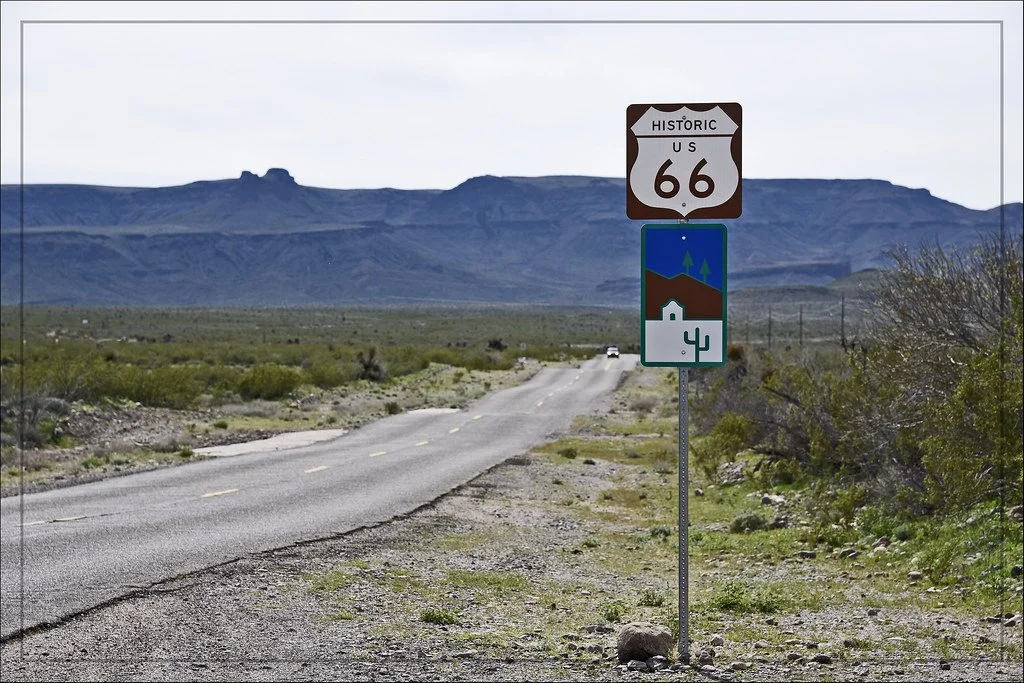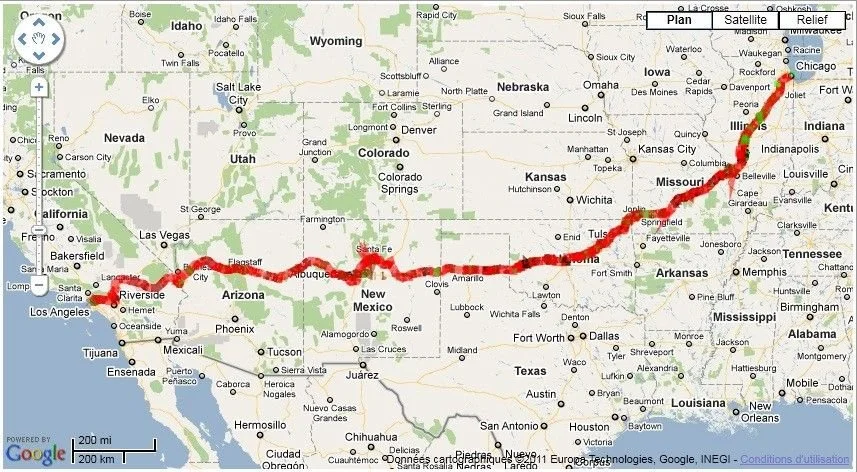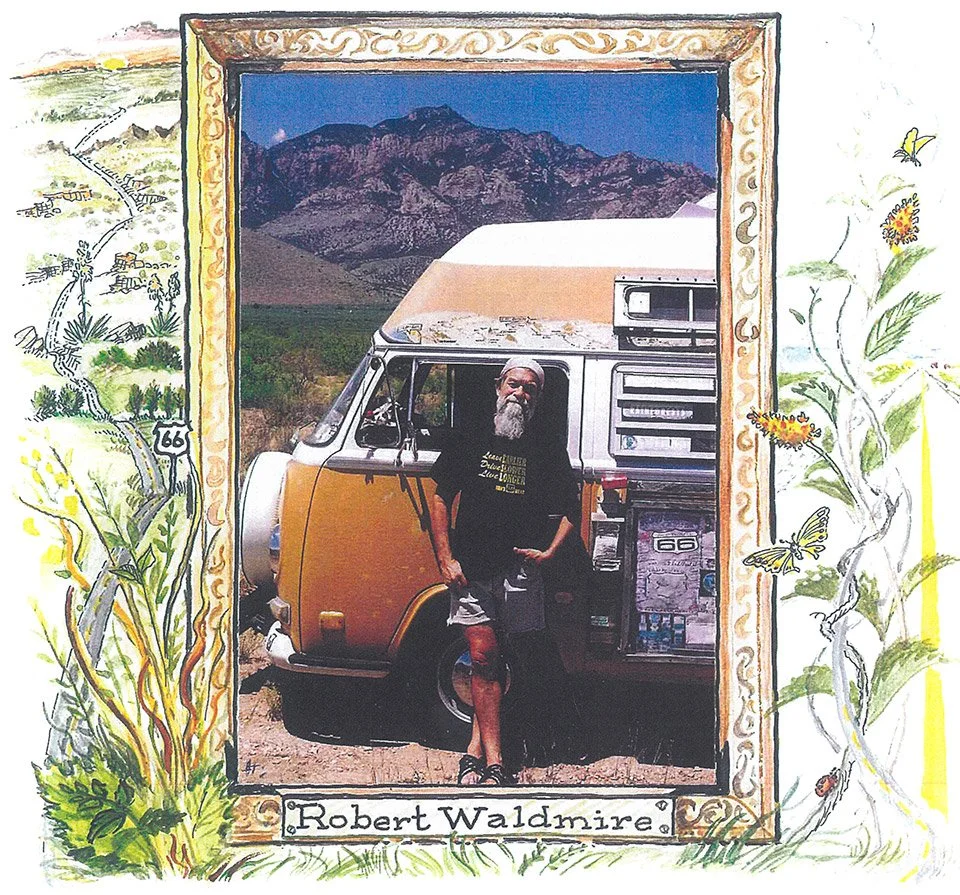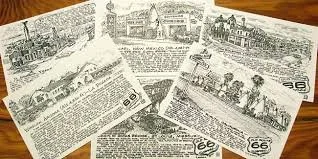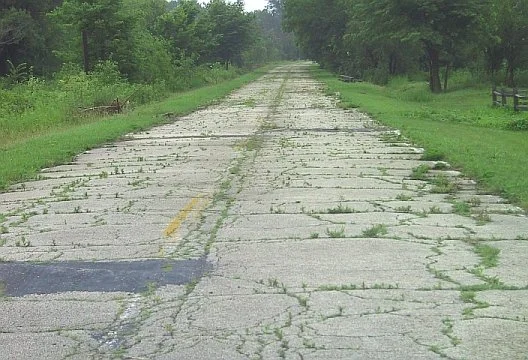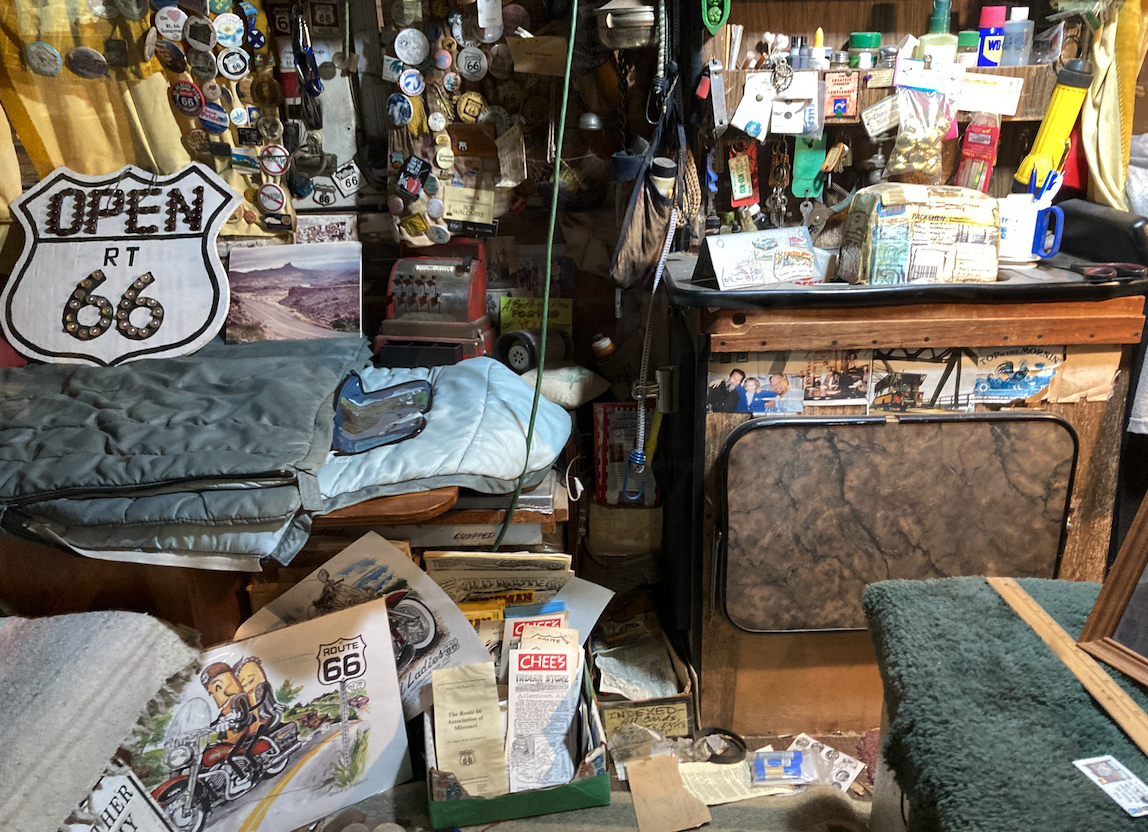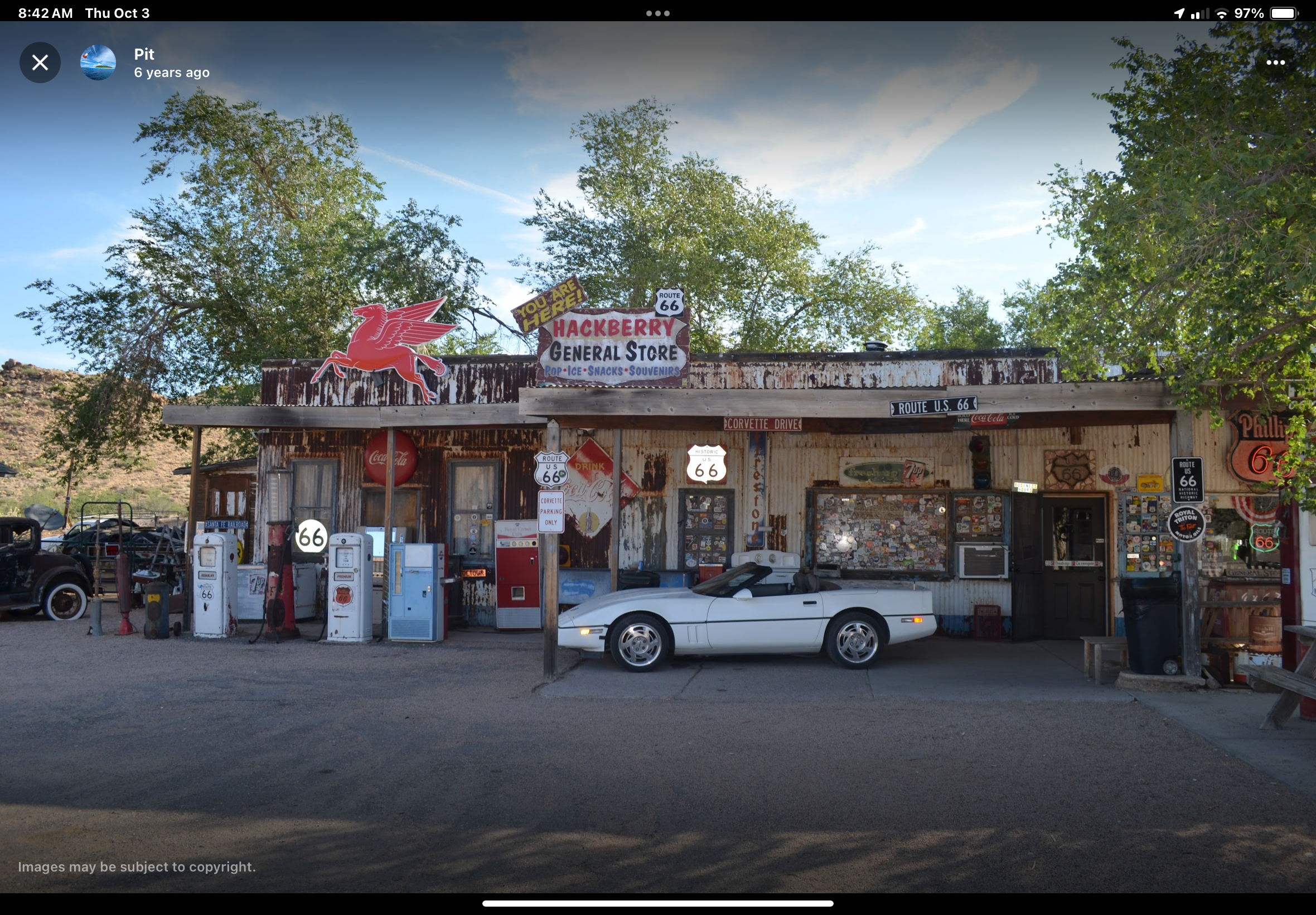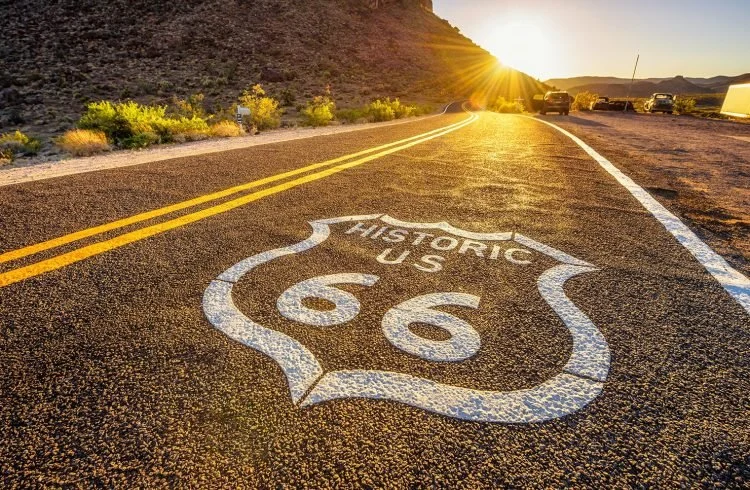ROUTE 66'S ARTIST IN RESIDENCE
HACKBERRY, AZ — 1987 — Driving from his Arizona home to his Illinois hometown, the artist found interstate traffic “fast and heavy.” Finally, he fled the manic modern world to drive frontage roads “so I wouldn’t have to be pushed along.”
Crossing the high, lonesome plains, each two-lane blacktop was empty, abandoned, a ghost road. But the route welcomed Bob Waldmire like an old friend. This was, after all, Route 66.
Opened in 1926, Route 66 stretched 2,448 miles from Chicago to the Pacific. Sixty-six was “The Main Street of America.“ As John Steinbeck wrote: “66 is the path of a people in flight, refugees from dust and shrinking land. . . 66 is the mother road.”
Bob Waldmire grew up near Route 66, in the heartland of America, in the heart of the 1950s. His father, after creating a new delicacy called “the corn dog,” ran the Cozy Dog Drive-In one block off 66 in Springfield, IL. Waldmire remembered the excitement whenever a tour bus pulled up, and the thrill of “seeing the exotic license plates of Oklahoma and Texas.”
One summer, when the Waldmires drove 66 all the way to Arizona, the boy caught “the desert bug.” After college, he headed back to the Southwest but soon succumbed to another “bug” — wanderlust. For the next fifteen years, Waldmire lived on the road.
Traveling in a 1972 VW microbus, Waldmire became an itinerant artist. Though he never studied art, he was always drawing, doodling. His metier became aerial views of small towns and cities suffused with small print describing the terrain, the history, the folklore.
“Although a picture might be worth a thousand words,” Arizona Highways wrote, “Waldmire clearly didn’t want to risk it. . . Between drawings and words, there isn’t a square inch to spare on Waldmire’s posters, and he wouldn’t have had it any other way.”
A gentle soul with the heart of a hippie, Waldmire never lost his Sixties spirit. He was a vegetarian, of course. He played the flute. He wore jeans and high top tennis shoes, unlaced, and greeted everyone with a smile and a wave. And he drew and drew.
Waldmire sold his meticulous maps on posters and postcards, ekeing out a living that kept him goin’ down the road feelin’ free. Selling postcards for a quarter, posters for a buck, Waldmire, a friend said, “just wanted enough to get more gas.”
Then on that 1987 trip home to Springfield, Route 66 called him. “I thought I should just see how many pieces of 66 I can take going back to Illinois and the lightbulb lit. What the hell? I should draw a piece map of 66. After all, I’m a traveling, map-making artist and this is the road I sort of launched my career off.”
Since the Fifties, however, Route 66 had died a slow death by interstate. Until the revival began. In the late Eighties, Old Route 66 Associations sprang up in several states. Neglected towns — Normal, IL, Tucumcari, NM, Needles, CA — put up murals and signs proclaiming “Historic Route 66.” And the world came.
Last week, when I drove 66 from Joliet, IL to St. Louis, I met 66 buffs from Italy, Brazil, New Zealand, even New York. And in the Route 66 Hall of Fame in Pontiac, IL, I met the work of Bob Waldmire. And his bus.
Waldmire’s VW, a pack rat’s dream of old books, tapes, posters, even S&H Green Stamps, captured his philosophy of life. "I love old stuff. The older it is the better, whether it’s music, movies, graphics, whatever. It’s a claim to the past.”
Once he rediscovered 66, Waldmire began his magnum opus. He spent nearly five years penning a 14-page foldout map detailing the Mother Road end-to-end. The map is something of a miracle, a highway on paper, with all its twists, turns, and trivia. You might need a magnifying glass to read it. Get one.
“New Mexico: Plenty of solitude and long vistas can be enjoyed along these stretches. Go slow & go back in time. Hear ‘the ghosts’ roar by, of those who passed long ago.”
While making his masterpiece, Waldmire bought an abandoned store in Hackberry, AZ, right on 66. He ran the store for several years, turning it into a modest museum of 66 memorabilia. Finally, finished with his map, restless again, he moved to the Chiracahua Mountains, but continued to roam 66 each summer.
“It’s become my yellow brick road.”
After 20 more years off and on the road, time and travel caught up with the artist some called “the mayor of Route 66.” In 2009, after a final art show in Springfield, Waldmire lay in his bus, dying of cancer. Friends came to pay final respects to this gentle, soulful vagabond.
"I see it (66) stretching from Chicago to Santa Monica, from Lake Michigan to the Pacific,” said Michael Wallis, author of Route 66: The Mother Road. “I know it’s this linear village and I know Bob was on there. So all was right with the world. And that's not going to change because Bob will still be out there. It’s that legacy, the artwork and that incredible presence.”
When Waldmire died, his ashes were scattered along 66 from Illinois to the Santa Monica pier. Route 66 still makes that journey every day, and its artist in residence is still with each tourist, each traveler.
“Like it or not, we’re all intimately connected in this human family,” Waldmire wrote. “So my job — besides drawing — will continue to be being cheerful to all others I encounter, offering a wave, a nod, a smile, to lend an ear or a shoulder to cry on. Only in doing so can I have a clear conscience, as I continue to luxuriate in this rare freedom so few others have.
—Affectionately, Bob Waldmire.”
